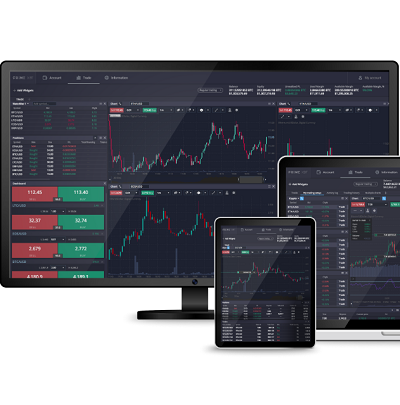
Risk Management in PrimeXBT Forex
The foreign exchange market presents significant opportunities for profit, but it also harbors substantial risks. Understanding and implementing effective Risk Management in PrimeXBT Forex PrimeXBT forex risk management strategies is essential for traders looking to navigate this volatile landscape successfully. In this article, we will explore various dimensions of risk management, essential principles, and strategies to minimize risk while aiming for optimal returns.
Understanding Risk in Forex Trading
Risk in forex trading can be defined as the possibility of incurring losses due to adverse market movements. Several factors contribute to the risks, including economic indicators, geopolitical events, interest rates, and market sentiment. Traders must assess these risks continuously to protect their investments and maintain their financial health.
The Importance of Risk Management
Effective risk management is crucial for long-term success in forex trading. It helps traders control their losses, maximize their gains, and make informed decisions. Without a solid risk management plan, even the most skilled traders can experience significant losses that may wipe out their investment capital.
Key Components of Risk Management
To implement a successful risk management strategy, traders should consider several key components:
- Risk Tolerance: Assessing individual risk tolerance is fundamental. Traders need to understand how much risk they can comfortably manage without becoming emotionally distressed or making hasty decisions.
- Position Sizing: Determining the appropriate size of a trading position relative to account size and risk tolerance is essential. A common rule is to risk only 1% or 2% of the trading capital on any single trade.
- Risk-Reward Ratio: Setting a favorable risk-reward ratio (such as 1:2 or 1:3) helps ensure that potential gains outweigh possible losses, allowing traders to thrive over the long term.
- Stop-Loss Orders: Implementing stop-loss orders is a proactive strategy that automatically closes a trade at a predetermined price, limiting potential losses and preserving trading capital.
- Diversification: Spreading investments across various currency pairs and financial instruments can help mitigate risk. Diversifying reduces the impact of adverse movements in any single asset.

Developing a Risk Management Plan
A comprehensive risk management plan should include the following steps:
- Set Clear Objectives: Define trading goals, including profit targets and acceptable levels of loss.
- Assess Market Conditions: Analyze market trends, news events, and economic indicators that could influence currency movements.
- Determine Trading Strategies: Choose trading strategies that align with your risk tolerance and goals, whether scalping, day trading, or swing trading.
- Monitor and Adjust: Continuously monitor trades and market conditions, making necessary adjustments to your risk management plan as needed.
Tools for Managing Risk
Several tools can assist traders in managing risk effectively:
- Risk Management Software: Tools that track positions, calculate exposure, and analyze performance metrics can provide valuable insights.
- Trading Journals: Keeping a detailed record of trades helps identify patterns, successes, and areas for improvement.
- Educational Resources: Utilizing webinars, tutorials, and market analysis can enhance trader knowledge and skill, leading to better risk management.
Psychological Factors in Risk Management
Trader psychology plays a significant role in risk management. Emotional responses such as fear and greed can lead to irrational decisions, potentially increasing the likelihood of losses. Developing a disciplined trading mindset is crucial. Traders should cultivate patience, maintain objectivity during market fluctuations, and adhere strictly to their risk management strategies.
Conclusion
In conclusion, risk management is an integral aspect of trading in the forex market. By understanding the nature of risk and implementing robust risk management strategies, traders can navigate the complexities of the forex world with greater confidence. As illustrated throughout this article, a well-structured risk management plan encompasses position sizing, stop-loss orders, diversification, and ongoing market analysis. Moreover, cultivating psychological resilience is essential for maintaining discipline and achieving long-term success. By prioritizing risk management, traders on the PrimeXBT platform can enhance their trading performance and work toward achieving their financial objectives.
